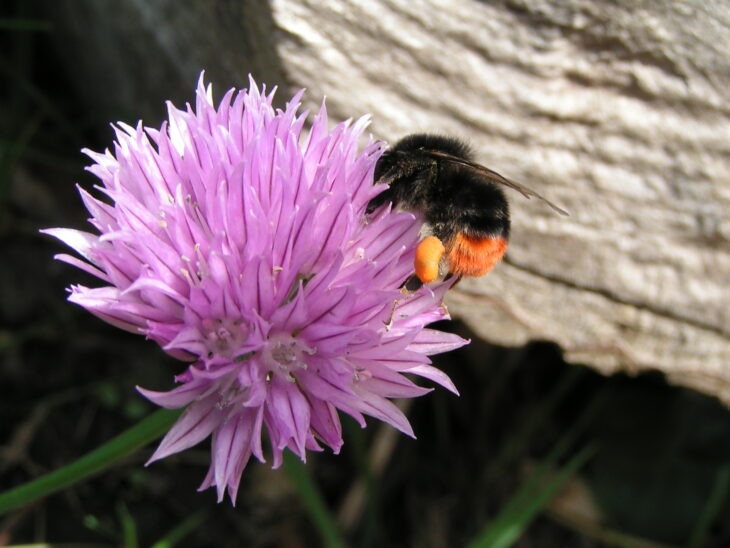Bumblebees like to nest in all sorts of places in our gardens, from tree hollows to compost heaps to under our sheds and decks – they usually nest near the ground, in a sun-facing spot, sheltered from rain.
Queen’s come out of hibernation throughout spring and are on the hunt for a safe place to nest, and we can make sure we have some in our gardens and/or school grounds waiting for them!
Help your local bumblebees by building an inviting spot in your garden following the instructions below.

Check out the pollen basket on the bumblebees back leg in the photo above! This is pollen the bee has collected to take back to their nest.
You can find out more about about bees by heading over to the Wild About Gardens website here
What you will need:
- A terracotta flower pot (20cm – with a hole in the bottom)
- A trowel
- Dry grass or moss
How to build your bumblebee nest:
You can download the activity guide with instructions below.
- Find a sheltered spot that gets some sun for about half the day – for example underneath a bush – and dig a hole that’s as wide as your pot and about half the depth as your pot.
- Fill the flowerpot with dry grass and/or moss.
- Turn the flowerpot upside down and place at angle into the hole so that the small hole in the bottom of the pot points out towards the sky.
- Check to see if there are any bees flying in and out of your nest next springtime!
Let us know how you get on by using #DiscoverLearnPlay
